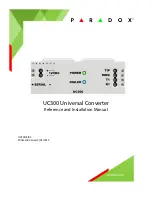1.3.2 A BRIEF OVERVIEW OF AUDIO FORMATS
Crystalio II Media Player
supports a mixture of both compressed and uncompressed audio formats.
Recently, as computer storage costs have greatly reduced, lossless compression has become increasingly
popular among those who can discern the differences.
MP3
MP3 was developed by the Moving Picture Experts Group (MPEG). The name MP3 stands for MPEG 1
Audio Layer 3 (see
section 1.3.1
). It is by far the most commonly used compressed audio format. Like
most modern ‘lossy’ audio compression, the MP3 process is modeled on the human hearing range. MP3
tries to reduce file size by first removing sounds from the frequency extremes.
WAV or WAVE
A format developed by Microsoft and IBM for storing high quality, uncompressed audio. WAV became the
standard on PCs, but because of the large file sizes it requires (about 10MB per minute of music), most
people convert WAV files to compressed formats (MP3, WMA, and so on).
* A file extension on a file (such as .ts) does not mean that the data within that file is compatible with the player. Many file formats use similar
file extensions, and it is not necessarily an indication of what the file encoding format is.
Crystalio II Media Player
supports many types of file
format, but due to encoding differences, not all files may play.
Common file extensions*
Streaming over the 100BASE-T
and USB2.0 supported
.wav
YES
Common file extensions*
Streaming over the 100BASE-T
and USB2.0 supported
.mp3
YES


















